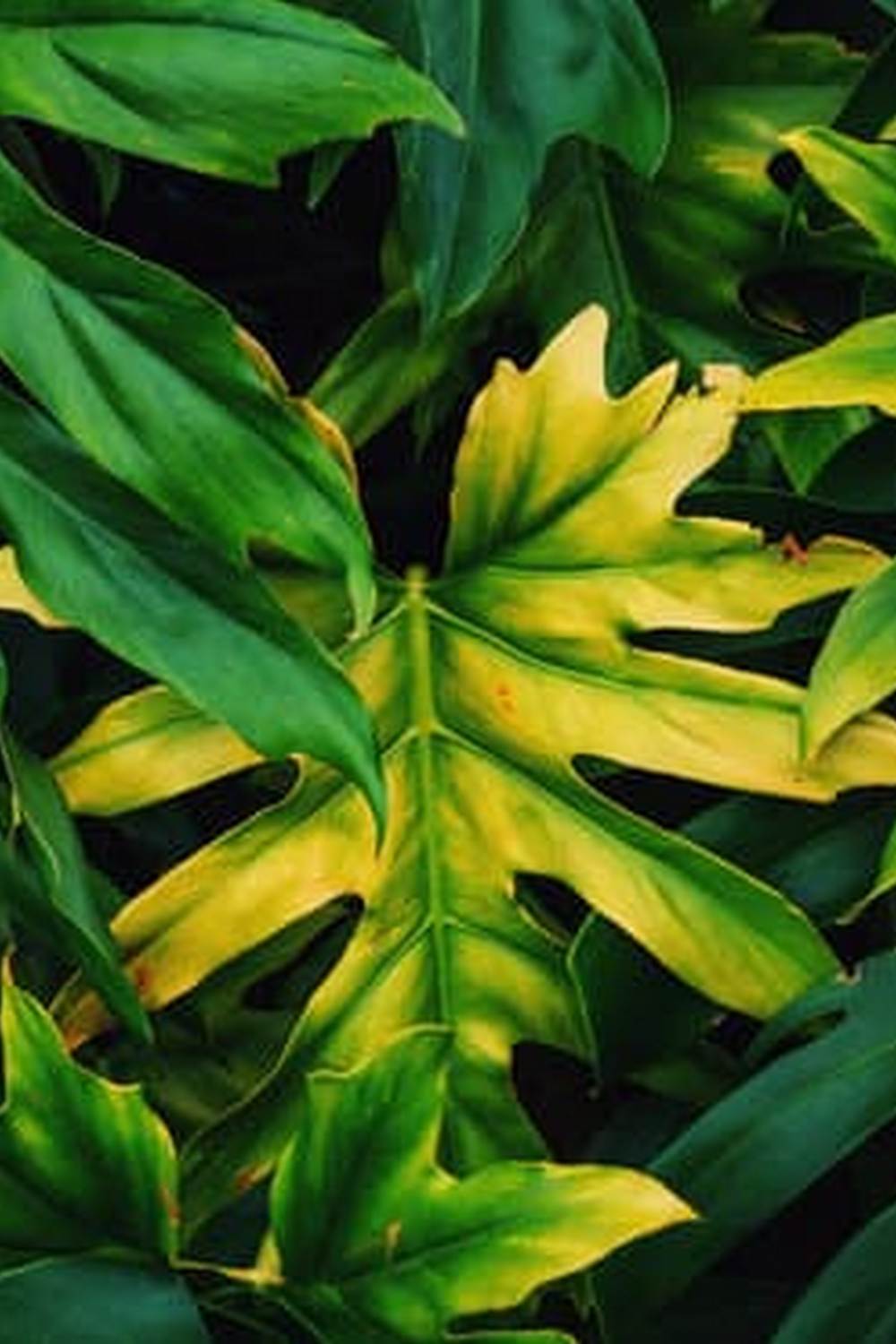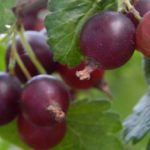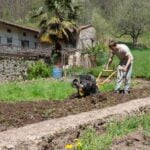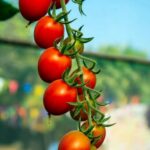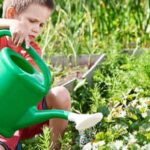Vegetable gardening has long been a popular hobby for those who enjoy the satisfaction of growing their own food. Traditionally, this has meant tending to plants in soil-filled beds or pots. However, there is an alternative method that is gaining attention – vegetable gardening in water. This unique approach, known as hydroponics, involves growing plants directly in water enriched with essential nutrients.
In this article, we will explore the benefits of vegetable gardening in water and why it is worth trying. We will delve into the world of hydroponics, providing a brief introduction to help you understand this innovative technique. Additionally, we will discuss how to choose the right vegetables for water gardening and what factors to consider when making your selection.
Setting up your water garden may seem intimidating at first, but fear not. We will provide you with all the essential equipment and supplies needed to get started. From there, we will guide you through a step-by-step process on how to start your water vegetable garden – from planting seeds to harvesting your bountiful produce.
Maintaining and caring for your water garden is crucial for optimal growth and yield. We will share valuable tips and tricks on how to ensure your plants thrive in their aquatic environment. Additionally, we will address common challenges that may arise during your water gardening journey and provide practical troubleshooting solutions.
Aesthetic appeal is also important when it comes to any garden setting. That’s why we will explore creative ideas for designing your water garden, enhancing its visual appeal while maintaining functionality. Finally, once harvest time arrives, we won’t leave you wondering what to do with all that fresh produce. We’ll offer recipe ideas and inspiration on how to enjoy the fruits of your labor.
Overall, vegetable gardening in water holds numerous benefits that make it a worthwhile endeavor. Whether you’re a beginner looking for an innovative way to grow vegetables or a seasoned gardener seeking new challenges, this article has something for everyone. So, let’s dive in and discover the world of vegetable gardening in water.
Understanding Hydroponics
Hydroponics is a method of growing plants in water without the use of soil. It is a popular technique among gardeners due to its numerous benefits and advantages. Understanding the basics of hydroponics is crucial for those who are interested in vegetable gardening in water.
One of the main benefits of hydroponics is that it allows for efficient use of resources. Since plants are grown in water, there is no need for soil, which eliminates the risk of soil-borne diseases and pests. Additionally, hydroponic systems use less water compared to traditional gardening methods as the water can be recycled and reused.
Another advantage of hydroponics is that it provides better control over plant growth. In a hydroponic system, nutrients are directly provided to the plants through the water solution, ensuring that they receive all the necessary elements for optimal growth. This allows for faster growth rates and higher yields compared to conventional gardening methods.
There are several types of hydroponic systems available, each with its own unique characteristics and requirements. Some common types include deep-water culture (DWC), nutrient film technique (NFT), and aeroponics. Each system has its own set of pros and cons, so it’s important to choose one that best suits your needs and preferences.
Choosing the Right Vegetables for Water Gardening
When it comes to choosing the right vegetables for water gardening, there are a few factors to consider in order to ensure successful growth and yield. Not all vegetables thrive in a hydroponic environment, so it’s important to select varieties that are well-suited for this type of gardening method.
One important factor to consider when choosing vegetables for water gardening is the growth habit of the plants. Some vegetables, such as lettuce and herbs, have a compact growth habit and don’t require large amounts of space. These types of plants are ideal for smaller water gardens or indoor hydroponic systems. On the other hand, vegetables like tomatoes and cucumbers have vining or sprawling habits and require more vertical or horizontal space to grow properly.
Another consideration when selecting vegetables for water gardening is their nutrient requirements. Since hydroponics relies on a nutrient-rich water solution to provide essential minerals and elements for plant growth, it’s important to choose vegetables that can thrive in this type of environment. Leafy greens like spinach, kale, and Swiss chard are excellent choices as they have relatively low nutrient requirements compared to other vegetables.
Lastly, it’s important to consider the time each vegetable takes to reach maturity. Some vegetables have longer growing seasons while others can be harvested relatively quickly.
If you’re looking for fast-growing crops that will provide you with a continuous harvest throughout the season, options like radishes, salad greens, and herbs are great choices. On the other hand, if you’re willing to wait for a longer period of time before harvesting your crops, options like tomatoes, peppers, and cucumbers may be more suitable.
In summary, when selecting vegetables for water gardening, it’s important to consider factors such as growth habit, nutrient requirements, and maturity time. By carefully choosing the right varieties of vegetables that are well-suited for a hydroponic environment, you can ensure optimal growth and yield in your water garden.
Setting Up Your Water Garden
Setting up a water garden for vegetable gardening requires some essential equipment and supplies. Whether you are a beginner or an experienced gardener, it is important to have the right tools and materials to ensure the success of your water garden.
One of the most crucial components of a water garden is a container or reservoir to hold the water. This can be a plastic tub, bucket, or even a large fish tank. Make sure that the container is clean and does not contain any chemicals or residue that could harm your plants.
In addition to a container, you will also need a growing medium for your vegetables. Unlike traditional soil-based gardening, hydroponic gardening relies on an inert medium such as perlite, vermiculite, or coconut coir to provide support and nutrients for the plants. These growing mediums are light and porous, allowing roots to easily access oxygen and absorb water.
To provide lighting for your hydroponic vegetable garden, you will need artificial grow lights. Plants require specific wavelengths of light for photosynthesis, so it is important to choose lights that emit the correct spectrum for optimal growth. LED grow lights are commonly used in hydroponics due to their energy efficiency and customizable settings.
Other essential supplies include a pH testing kit to monitor the acidity level of the water, nutrient solutions specifically formulated for hydroponic gardening, and an air pump with air stones or diffusers to ensure proper oxygenation of the water.
| Equipment/Supply | Description |
|---|---|
| Container | A clean plastic tub, bucket, or fish tank to hold the water. |
| Growing Medium | An inert medium such as perlite, vermiculite, or coconut coir to support the plants and provide nutrients. |
| Artificial Grow Lights | Lights that emit the correct spectrum of light for photosynthesis. |
| pH Testing Kit | To monitor the acidity level of the water. |
| Nutrient Solutions | Specially formulated solutions that provide essential nutrients for hydroponic gardening. |
| Air Pump with Diffusers | To ensure proper oxygenation of the water. |
Step-by-Step Guide to Starting your Water Vegetable Garden
Starting a water vegetable garden can be a fun and rewarding experience. With the right knowledge and tools, you can grow your own fresh and organic produce right in your own backyard. This step-by-step guide will walk you through the process of setting up and maintaining your water garden, from planting seeds to harvesting your vegetables.
- Choose Your Vegetables: The first step in starting your water vegetable garden is selecting the right vegetables to grow. Some vegetables are better suited for hydroponic gardening than others. Leafy greens like lettuce, spinach, and kale are excellent choices for beginners as they are relatively easy to grow in water. Other popular options include tomatoes, cucumbers, peppers, and herbs such as basil and mint.
- Gather Supplies: Before you start planting, gather all the necessary supplies for your water garden. You will need a container or reservoir to hold the water, nutrient solution, growing medium or net pots to support the plants, an air pump or aerator to provide oxygenation, a pH testing kit, and appropriate lighting if you don’t have access to natural sunlight.
- Planting Seeds: Once you have chosen your vegetables and gathered all the supplies, it’s time to plant the seeds. Fill your net pots or growing medium with perlite or vermiculite before placing one or two seeds in each pot. Cover the seeds lightly with more growing medium and ensure that they are moist but not soaked.
- Provide Lighting: If you don’t have access to sufficient natural sunlight, provide artificial lighting for your water garden. LED grow lights or fluorescent lights specifically designed for plants work best as they provide the necessary spectrum of light for plant growth.
- Maintain Water Levels: Monitor the water levels in your container regularly to ensure that they remain at the proper depth for plant growth. The roots should be submerged but not completely covered with water.
- Add Nutrient Solution: As your plants grow, they will need nutrients to thrive. Add a nutrient solution specifically formulated for hydroponic gardening to your water garden according to the manufacturer’s instructions. Test the pH level of the water regularly and adjust it as needed to maintain optimal conditions for plant growth.
- Harvesting Your Vegetables: Once your vegetables have reached maturity, it’s time to harvest them. Use clean scissors or shears to snip off leaves or fruits as needed. Enjoy the fresh and organic produce from your water garden in salads, stir-fries, or other delicious dishes.
Starting your own water vegetable garden is a rewarding and sustainable way to enjoy fresh produce. By following this step-by-step guide, you’ll be on your way to growing thriving plants and enjoying a bountiful harvest in no time.
| Steps | Description |
|---|---|
| Choose Your Vegetables | Select vegetables suitable for hydroponic gardening. |
| Gather Supplies | Acquire necessary equipment such as containers, nutrient solution, growing medium, etc. |
| Planting Seeds | Sow seeds in net pots or growing medium. |
| Provide Lighting | Ensure access to sufficient natural sunlight or provide artificial lighting. |
| Maintain Water Levels | Regularly check and adjust water levels in the container. |
Maintaining and Caring for Your Water Garden
Maintaining and caring for your water garden is crucial to ensure optimal growth and yield of your vegetables. Here are some essential tips to help you take care of your water garden:
- Monitor nutrient levels: In a water garden, plants obtain nutrients directly from the water rather than the soil. It is important to regularly test and monitor the nutrient levels in the water to ensure that your plants are getting the necessary nutrients for healthy growth. You can use a nutrient testing kit or take samples of the water to a local gardening center for analysis. Adjusting nutrient levels as needed will promote optimal growth and yield.
- Maintain proper pH balance: The pH level of the water in your garden plays a vital role in plant health. Most vegetable plants prefer slightly acidic to neutral pH levels between 6 and Regularly test the pH level using a pH testing kit and make adjustments if necessary by adding acid or alkaline solution to maintain the desired range.
- Ensure adequate aeration: Oxygen is essential for root health in a water garden. Proper aeration helps prevent root rot and promotes oxygen exchange between roots and water. Consider installing an air pump or an aerator to increase oxygen levels in your water garden. This will provide better growing conditions for your vegetables.
- Control pests and diseases: Just like traditional gardening, pests and diseases can affect plants in a water garden as well. Inspect your plants regularly for signs of pests such as aphids or spider mites, as well as any unusual discoloration or wilting that could indicate disease. Use organic pest control methods, such as neem oil or insecticidal soap, if necessary to keep your plants healthy.
- Regular maintenance tasks: Regular maintenance tasks include removing any dead leaves or debris from the surface of the water, pruning overgrown plants, and cleaning any filters or pumps used in your water garden system. Maintaining cleanliness helps prevent clogging and promotes optimal growth.
By following these tips, you can effectively maintain and care for your water garden, ensuring that your vegetables grow healthily and you have a bountiful harvest. Happy gardening.
Overcoming Common Challenges in Water Gardening
Preventing Algae Growth
One of the most common challenges in water gardening is dealing with algae growth. Algae can quickly take over your water garden, blocking sunlight and nutrients from reaching your plants and inhibiting their growth. To prevent or control algae growth, it is important to implement a few strategies.
First, provide adequate shade for your water garden. Excessive sunlight can promote algae growth, so consider installing a shade cloth or placing your water garden in a partially shaded area. Additionally, you can introduce floating plants like water hyacinth or water lettuce that create natural shade and absorb excess nutrients that promote algae growth.
Another solution to control algae is incorporating beneficial bacteria into your water garden. These bacteria consume excess nutrients, effectively starving the algae and preventing their growth. You can find these beneficial bacteria in liquid form or as slow-release pellets specifically designed for water gardens.
Managing pH Levels
Another common challenge faced by water gardeners is maintaining optimal pH levels in their system. The pH level of the water affects the availability of nutrients to the plants, and deviations from the ideal range can hinder plant growth. To manage pH levels effectively:
- Regularly monitor the pH levels using a pH test kit.
- Aim for a slightly acidic to neutral range of 6-7 for most vegetables.
- If the pH is too high (basic), add an acidifying agent such as vinegar or citric acid gradually until it reaches the desired range.
- If the pH is too low (acidic), add some dolomite lime or potassium carbonate cautiously until it comes within the target range.
Remember that sudden changes in pH can shock your plants and lead to stress or even death, so gradual adjustments are crucial.
Dealing with Pest Infestations
Pests are inevitable in any type of gardening, including water gardening. Common pests that can wreak havoc include aphids, slugs, snails, and mosquitoes. To manage pest infestations in your water garden:
- Regularly inspect your plants for signs of pests and remove them manually when possible.
- Introduce beneficial insects like ladybugs or predatory beetles that feed on common pests.
- Use physical barriers such as netting to prevent insects from reaching your plants.
- For mosquitoes, preventing their breeding by incorporating mosquito dunks or using a water circulation system can be effective.
If chemical intervention is necessary, consider organic and environmentally-friendly options to minimize the impact on your water garden ecosystem.
By being proactive and addressing these common challenges in water gardening, you can ensure the success of your vegetable garden and enjoy a bountiful harvest of fresh and healthy produce.
Creative Ideas for Water Garden Designs
When it comes to vegetable gardening in water, not only can you enjoy the benefits of fresh and organic produce, but you can also enhance the aesthetics of your space. Designing a creative water garden adds beauty and tranquility to your surroundings while providing a functional growing environment for your vegetables. Here are some ideas to inspire you in creating a visually pleasing water garden.
Container Gardens
Container gardens are a versatile and compact option for adding visual interest to your space. You can use various containers such as buckets, tubs, or even decorative pots to grow your vegetables. Consider using different sizes and shapes of containers to create an eye-catching arrangement. Arrange them on different levels like shelves or tables to add depth and dimension to your water garden.
Vertical Gardens
Vertical gardens maximize space utilization while adding a unique aesthetic appeal. Create vertical structures such as trellises or hanging baskets where you can grow vining vegetables like tomatoes, cucumbers, or beans. Utilize the height of your space by attaching containers to walls or fences. This not only saves space but also provides an interesting focal point in your water garden.
Aquaponic Systems
Aquaponics combines hydroponics with fish farming, creating a symbiotic relationship between plants and aquatic animals. The fish waste fertilizes the plants while the plants filter and clean the water for the fish. Incorporating an aquaponic system into your water garden not only enhances its beauty but also creates an efficient and sustainable ecosystem for both flora and fauna.
Water Features and Decorative Elements
Incorporating water features like fountains, ponds, or cascades into your vegetable garden design adds a soothing element that enhances the overall ambiance of your space. Additionally, consider incorporating decorative elements like rocks, pebbles, or statues to add visual interest and create a harmonious balance between the natural and the artistic.
By incorporating creative designs into your water garden, you can transform your space into a visually stunning oasis. Whether it’s using containers, creating vertical structures, utilizing aquaponics, or incorporating water features, there are countless ways to enhance the aesthetics of your vegetable garden in water. Let your imagination guide you as you create a unique and beautiful space that not only provides fresh produce but also becomes a serene retreat for relaxation and enjoyment.
Harvesting and Enjoying the Fruits of Your Water Garden
As you begin to harvest the fruits of your water garden, you’ll be rewarded not only with fresh and organic produce, but also with endless possibilities in the kitchen. From salads to stir-fries and everything in between, the culinary options are truly abundant. In this final section, we will explore some exciting recipes and ideas for how to make the most of your bountiful harvest.
One of the simplest ways to enjoy the flavors of your water garden is by creating refreshing salads. Combine crisp lettuce or spinach leaves with freshly harvested cucumbers, tomatoes, and herbs for a vibrant and nutritious dish. Add a light vinaigrette dressing made with herbs from your garden to enhance the flavors even further.
For a heartier meal, consider making a stir-fry using your favorite vegetables from your water garden. Toss together vibrant bell peppers, crunchy snap peas, and tender zucchini in a hot pan with some garlic, ginger, and soy sauce for a flavorful Asian-inspired dish that can be enjoyed alone or served over rice or noodles.
Additionally, using the herbs you have grown in your water garden can elevate any dish. Whether it’s adding basil to homemade pesto or using fresh mint leaves for an invigorating summer drink, incorporating these aromatic herbs into your cooking offers a world of culinary exploration.
The possibilities are truly endless when it comes to utilizing the fresh produce from your water garden. Get creative in the kitchen and experiment with different combinations of vegetables and herbs to create dishes that showcase the unique flavors that hydroponic gardening can bring.
By growing your own food in water, not only are you providing yourself with nourishing sustenance but also experiencing the satisfaction of cultivating something from seed to plate. So roll up your sleeves and get ready to enjoy all that nature has provided through vegetable gardening in water.
Frequently Asked Questions
What vegetables can be grown in just water?
There are several vegetables that can be grown in water alone. One popular example is lettuce, specifically varieties like romaine or leaf lettuce.
These vegetables have shallow roots and can thrive in a hydroponic system where their roots are submerged in nutrient-rich water. Additionally, herbs like basil and mint can also be grown solely in water, making them excellent options for indoor gardening or those with limited space.
Can you grow vegetables in water only?
Yes, it is possible to grow vegetables in water only through a technique called hydroponics. Hydroponics involves growing plants without soil and instead using a nutrient-rich water solution to provide the necessary minerals and elements for plant growth.
This method allows vegetables to grow faster, use less water than traditional soil-based cultivation, and reduces the risk of soil-related diseases or pests. With proper setup and maintenance, vegetables can thrive solely on water in a controlled hydroponic system.
What is the easiest vegetable to grow in water?
When it comes to choosing the easiest vegetable to grow in water, many gardeners would suggest green onions or scallions. These perennial vegetables have a shallow root system which makes them well-suited for growing in water alone. Simply place the white bulb ends with inch-long green tops into a container filled with clean water, ensuring the roots are submerged but not the green part above the surface.
Within a short period of time, new green shoots will emerge from the onion bulbs, allowing you to harvest fresh scallions as needed without ever planting them in soil. Their rapid growth and low requirements make green onions an ideal choice for beginners experimenting with hydroponics or indoor gardening projects.

If you’re looking to get into vegetable gardening, or are just looking for some tips on how to make your current garden better, then you’ve come to the right place! My name is Ethel and I have been gardening for years. In this blog, I’m going to share with you some of my best tips on how to create a successful vegetable garden.

